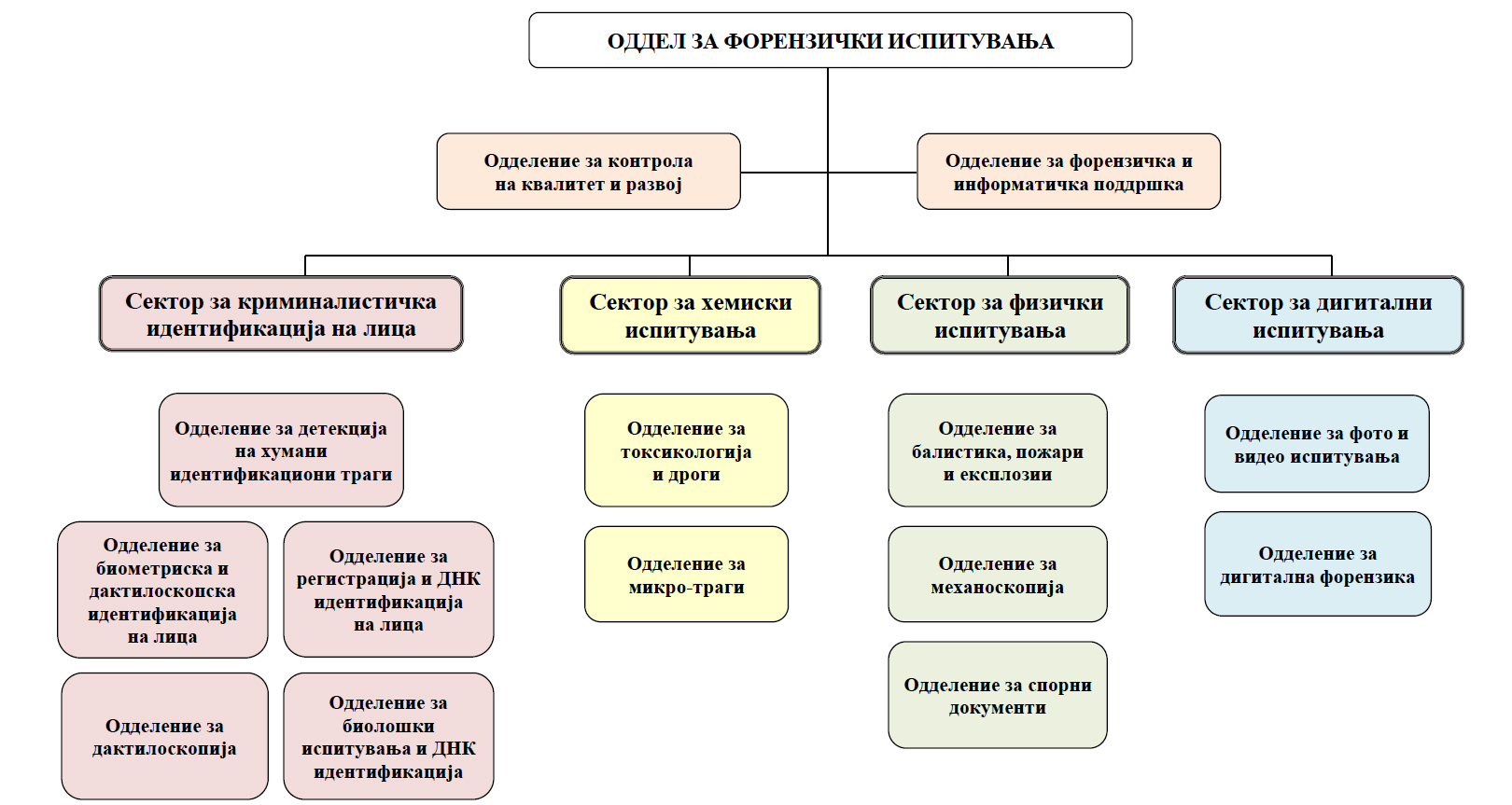Mission
The mission of the Department of Forensic Examinations (DFE) is to provide objective and quality results from examinations through multidisciplinary application of modern scientific and technical methods that will be accepted by all service users.
Vision
The vision of the DFE is to provide an accredited forensic service, recognized as independent, neutral, efficient, timely, and professionally competent, aligned with investigative requirements and simultaneously meeting the standards of a modern forensic institution.
Organizational Structure

Accreditation
Since 2016, the Department of Forensic Examinations (DFE) has formally established a quality management system in accordance with the requirements of the international standard MKC EN ISO/IEC 17025:2006 “General requirements for the competence of testing and calibration laboratories.”
In 2020, the Department successfully completed the transition process of the quality management system to comply with the new standard MKC EN ISO/IEC 17025:2018.
The current scope of accreditation of the DFE includes methods from several laboratories, namely: DNA identification of persons, DNA identification of traces, narcotic drugs, questioned documents, firearms and ballistics, fingerprint trace development, mechanoscopy, micro traces, and dactyloscopy.
LIST OF ACCREDITED METHODS
-
Laboratory for Biological Examinations and DNA Identification
Detection of human genetic loci in biological trace samples -
Laboratory for Registration and DNA Identification of Persons
Human identification through detection of genetic loci -
Laboratory for Firearms and Ballistics
Comparative analysis of cartridge cases
Comparative analysis of projectiles -
Laboratory for Fingerprint Trace Development
Development of fingerprint traces using cyanoacrylate fuming
Development of fingerprint traces using ninhydrin -
Laboratory for Questioned Document Examination
Forensic examination of handwriting
Forensic examination of signatures -
Laboratory for Drugs
Qualitative analysis of amphetamine, methamphetamine, and 3,4-methylenedioxy-methamphetamine by gas chromatography–mass spectrometry (GC/MS) -
Laboratory for Micro-Traces
Qualitative color test for detecting lead traces using the chemical reagent sodium rhodizonate (NaRho)
Qualitative color test for detecting copper traces using the chemical reagent dithiooxamide (DTO)
Analysis of firearm discharge residues (initial particles using scanning electron microscopy with energy-dispersive detector) -
Laboratory for Mechanical Traces and Motor Vehicles
Comparative analysis of mechanical traces -
Laboratory for Dactyloscopy
Expert examination of traces and fingerprints
A detailed overview of the accreditation scope of the DFE can be downloaded from the Institute for Accreditation of the Republic of North Macedonia.

